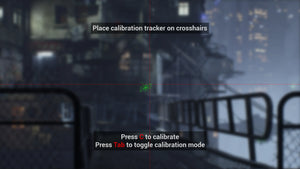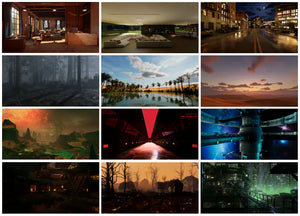What is a VFX Artist? Career, Skills & Future Opportunities

Visuals are powerful. From breathtaking superhero battles to realistic alien worlds and epic fantasy landscapes, none of this would be possible without the work of VFX artists. If you’ve ever been fascinated by how movies, video games, or TV shows bring impossible things to life, you’ve already experienced the impact of visual effects.
But what exactly is a VFX artist? Is it a good career choice? How much do they earn, and what do you need to study to become one? In this blog, we’ll dive into everything you need to know — from job roles and required skills to future prospects and FAQs.
What is a VFX Artist?
A VFX artist is a creative professional who uses computer software, artistic techniques, and technical knowledge to design, create, and integrate visual effects into films, TV shows, games, advertisements, and even virtual reality experiences.
The term VFX stands for Visual Effects — the process of blending real-world footage with computer-generated imagery (CGI) or digitally manipulated visuals to create scenes that would be impossible, unsafe, or too expensive to shoot in real life. In simple words, a VFX artist’s role is to make the imaginary look real.
What Does a VFX Artist Do?
VFX artists have diverse responsibilities depending on their specialization. Some focus on explosions, fire, or water simulations, while others handle character animation or environment creation. A few key responsibilities include:
-
Designing and creating realistic simulations of natural elements like smoke, fire, or rain.
-
Creating digital doubles of actors for dangerous stunts.
-
Removing unwanted objects from raw footage (paint/roto work).
-
Enhancing environments by adding buildings, skies, or crowds.
-
Integrating CGI with live-action footage so seamlessly that viewers can’t tell the difference.
Is VFX Artist a Good Career?
Many aspiring creatives wonder: Is VFX a stable career? The answer is yes — and it’s growing rapidly.
With the global demand for high-quality content on platforms like Netflix, Amazon Prime, YouTube, and gaming industries, VFX has become an essential part of storytelling. Movies are becoming more visually ambitious, while video games and advertising campaigns rely heavily on immersive effects.
For passionate artists with technical skills, this field offers:
-
A wide range of career opportunities worldwide.
-
Creative freedom to work on exciting projects.
-
High earning potential as you gain experience.
-
Opportunities to freelance or work remotely.
However, like any creative profession, success depends on dedication, practice, and continuous learning.

Is VFX Easy or Hard?
Becoming a VFX artist isn’t “easy,” but it’s not impossible either. It combines creativity and technology, so you need both artistic vision and technical knowledge.
Challenges include:
-
Mastering multiple software tools such as Maya, Houdini, Nuke, After Effects, and Blender.
-
Keeping up with rapidly evolving industry standards.
-
Handling tight deadlines and project pressure.
On the positive side, with structured learning, online courses, and practice, anyone passionate about storytelling and visuals can break into this field. It’s not about instant mastery but consistent growth.
Is VFX a Stressful Job?
Like many creative fields, VFX comes with its challenges. Deadlines, long working hours during peak production times, and client demands can sometimes feel overwhelming.
But here’s the truth: the stress level often depends on the studio environment and project scale. Major Hollywood blockbusters may involve more pressure than smaller independent projects. Many VFX artists say the reward of seeing their work on the big screen outweighs the stress.
If you’re organized, passionate, and can handle teamwork, you’ll find the challenges manageable and fulfilling.
Does VFX Have a Future?
Absolutely — the future of VFX is brighter than ever. The entertainment and gaming industries are expanding, and so is the need for realistic effects. With the rise of:
-
Virtual Reality (VR) and Augmented Reality (AR)
-
Streaming platforms creating massive amounts of content
-
Gaming industry growth
-
AI and real-time rendering tools
The scope of VFX is expected to grow exponentially. In fact, VFX is no longer limited to Hollywood. From regional cinema to YouTube creators and businesses, everyone now uses some form of visual effects.
So, yes — VFX has a strong and exciting future ahead.
How to Become a VFX Artist
If you’re wondering how to become a VFX artist, here’s a step-by-step roadmap:
-
Get the Right Education – You don’t always need a specific degree, but studying animation, fine arts, computer graphics, or multimedia gives you a solid foundation. Specialized VFX training programs and online courses are also great starting points.
-
Learn Industry Software – Master popular tools like Adobe After Effects, Nuke, Maya, Blender, and Houdini. Each specialization (lighting, compositing, simulation) requires different software.
-
Build Your Portfolio – Showcase your best work in a demo reel. Employers care more about your skills and creativity than just certificates.
-
Choose a Specialization – VFX has many branches, such as:
-
Lighting artist (working with shadows, illumination, and mood)
-
Compositing artist (blending CGI with live footage)
-
Simulation artist (explosions, smoke, fluids)
-
Paint/roto artist (cleaning up footage, object removal)
-
Gain Practical Experience – Internships, freelance projects, and small studio jobs help you get industry exposure.
-
Network & Apply – Connect with other professionals through LinkedIn, forums, and events. Apply to studios, gaming companies, and advertising agencies.
How to Become a VFX Lighting Artist
Lighting is one of the most crucial aspects of visual storytelling. A VFX lighting artist ensures that CGI elements match the lighting of live-action footage so everything looks realistic.
Steps to become a lighting artist:
-
Study photography and understand how light behaves.
-
Learn software like Maya, Houdini, and RenderMan.
-
Practice recreating real-world lighting in 3D environments.
-
Build a strong portfolio focused on mood, atmosphere, and realism.
If you enjoy working with shadows, reflections, and creating dramatic moods, lighting might be the perfect specialization for you.

What Degree Do You Need to Be a VFX Artist?
Here’s the good news: you don’t always need a formal degree to become a VFX artist. What matters most is your portfolio and skills.
That said, a degree in:
-
Animation
-
Fine Arts
-
Computer Graphics
-
Game Design
-
Multimedia Arts
…can give you an edge when applying for jobs. Many artists, however, succeed purely through online courses, certifications, and practice.
What is a VFX Artist in Games?
VFX is not just for films — it’s also vital in the gaming industry. In video games, a VFX artist designs explosions, magic spells, fire, smoke, or environmental effects like rain and fog.
Unlike movies, game VFX must be optimized for real-time performance. This means effects should look stunning but not slow down the gameplay. So, if you’re a gamer with a passion for digital art, game VFX could be your dream career.
What is a Paint Artist in VFX?
Among the many roles in VFX, a paint artist plays a very specialized but important part. Paint artists are responsible for cleaning up footage by removing unwanted objects, wires, rigs, or markers that are used during filming.
For example, if an actor performs a stunt with visible harnesses for safety, the paint artist digitally removes those wires so the final shot looks natural. They also work on tasks like:
-
Removing dust, scratches, or reflections.
-
Fixing continuity errors in scenes.
-
Cleaning green/blue screen backgrounds before compositing.
It’s a meticulous job that requires patience and an eye for detail. While it might not be as flashy as creating explosions, it is absolutely essential to making a scene believable.
How Much Does a VFX Artist Make?
Salary is a big factor when deciding on a career path. The earnings of a VFX artist vary depending on experience, specialization, and location.
-
Entry-level artists: Often earn between $25,000 – $40,000 per year.
-
Mid-level professionals: With 3–5 years of experience, salaries range from $45,000 – $75,000 per year.
-
Senior artists and supervisors: Can make $80,000 – $120,000+ per year.
In regions like North America and Europe, salaries are generally higher compared to South Asia. Freelance VFX artists also have the opportunity to earn well, especially if they work with international clients or gaming companies.
So, if you’re asking how much does a VFX artist make, the answer is: it depends on skill, specialization, and the industry sector — but the growth potential is significant.
How to Get a Job as a VFX Artist
Landing your first job in the VFX industry can feel overwhelming, but with the right strategy, it’s achievable. Here’s a roadmap:
-
Build a Strong Demo Reel – This is your visual résumé. Keep it short (1–2 minutes) and showcase your best work. Tailor it to the role you want.
-
Apply to Studios & Agencies – Look for openings at film studios, animation houses, gaming companies, and advertising firms.
-
Freelance Platforms – Start small with platforms like Upwork, Fiverr, or Behance to gain experience and client testimonials.
-
Network with Industry Pros – Attend online webinars, VFX forums, and industry events. Networking often opens doors to hidden opportunities.
-
Stay Updated – Learn new tools and keep pace with industry trends. Studios love artists who are adaptable.
What Do I Need to Study to Become a VFX Artist?
The study path for a VFX career can vary. You don’t necessarily need a formal degree, but you do need skills. Options include:
-
Formal Education: Pursuing a bachelor’s degree in Animation, Multimedia Arts, Fine Arts, or Game Design.
-
Diploma/Certification Courses: Many academies and online platforms offer short-term professional courses in VFX.
-
Self-Learning: With platforms like YouTube, Udemy, and Coursera, motivated learners can self-train effectively.
What matters most is your portfolio, not just your degree. Employers prioritize creativity, technical proficiency, and your ability to solve visual problems.

FAQs About Becoming a VFX Artist
To make this blog complete, let’s answer all the most frequently asked questions — covering the secondary keywords directly.
What is a VFX artist?
A VFX artist is a professional who uses software and creative techniques to design and integrate visual effects into films, games, and digital media.
What does a VFX artist do?
They create simulations, remove unwanted objects, composite CGI with real footage, and bring impossible scenes to life on screen.
Is VFX artist a good career?
Yes, VFX is a rewarding career with high global demand. The industry is expanding across films, games, advertising, and streaming platforms.
Is VFX easy or hard?
It’s challenging but not impossible. With consistent learning and practice, anyone passionate about visuals and storytelling can excel.
Is VFX a stressful job?
It can be stressful during deadlines or big projects, but many professionals find the creative rewards outweigh the challenges.
Does VFX have a future?
Absolutely. With AI, AR/VR, and gaming on the rise, the demand for VFX artists is set to grow rapidly.
How to become a VFX artist?
Start by learning software, choosing a specialization, building a demo reel, and applying to studios or freelance opportunities.
How to become a VFX lighting artist?
Study photography, understand lighting behavior, and master 3D software. A strong lighting-focused portfolio will help you land jobs.
What degree do you need to be a VFX artist?
A degree in Animation, Fine Arts, Game Design, or Multimedia Arts helps, but isn’t always required. Skills matter more.
How much does a VFX artist make?
Salaries vary from $25,000 for beginners to $100,000+ for experienced professionals, depending on region and specialization.
How to get a job as a VFX artist?
Build a demo reel, apply to studios, take freelance projects, and network with professionals in the industry.
What is a VFX artist in games?
In gaming, VFX artists design real-time effects like explosions, magic spells, fire, and environmental details optimized for performance.
What is a paint artist in VFX?
A paint artist removes unwanted elements like wires, rigs, or markers from raw footage to make shots clean and realistic.
What do I need to study to become a VFX artist?
You can pursue animation, fine arts, or multimedia degrees, or learn through online courses. The key is building a strong portfolio.
Conclusion: Your Path to a VFX Career
Becoming a VFX artist is one of the most exciting career choices for anyone passionate about creativity, technology, and storytelling. From blockbuster films to immersive video games, VFX artists shape the way audiences experience visual content.
It’s not always easy — you’ll need to master software, develop artistic skills, and stay updated with industry trends. But with dedication, the rewards are immense: a global career, creative freedom, and the joy of seeing your imagination come alive on screen.
Whether you want to become a VFX lighting artist, a paint artist, or a game-focused VFX professional, the industry has a place for you. Start small, keep learning, and build your portfolio. Your future in VFX is limited only by your imagination.
Ready to take the first step toward your dream career in VFX? Get in touch with us today for guidance on VFX courses, portfolio building, and career advice. Book a free consultation now and start your journey as a VFX artist!




